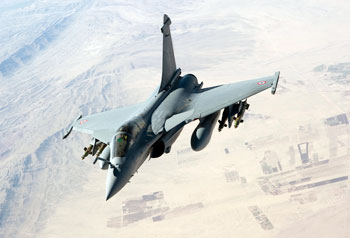INDIAN ARMED FORCES CHIEFS ON OUR RELENTLESS AND FOCUSED PUBLISHING EFFORTS

The insightful articles, inspiring narrations and analytical perspectives presented by the Editorial Team, establish an alluring connect with the reader. My compliments and best wishes to SP Guide Publications.

"Over the past 60 years, the growth of SP Guide Publications has mirrored the rising stature of Indian Navy. Its well-researched and informative magazines on Defence and Aerospace sector have served to shape an educated opinion of our military personnel, policy makers and the public alike. I wish SP's Publication team continued success, fair winds and following seas in all future endeavour!"

Since, its inception in 1964, SP Guide Publications has consistently demonstrated commitment to high-quality journalism in the aerospace and defence sectors, earning a well-deserved reputation as Asia's largest media house in this domain. I wish SP Guide Publications continued success in its pursuit of excellence.
- Indian Air Force Aims for Full Indigenous Inventory by 2047 — Air Chief Marshal A.P. Singh
- General Upendra Dwivedi takes over as the Chief of the Army Staff
- Rajnath Singh assumes charge as Defence Minister for the second consecutive term
- Admiral Dinesh K. Tripathi assumes Command of the Indian Navy as 26th Chief of the Naval Staff
- Prime Minister witnesses 'Bharat Shakti' – a Tri-Services Firing and Manoeuvre Exercise in Pokhran, Rajasthan
HAL flags MMRCA tech transfer challenges
 March 04, 2013: It has always been known that the MMRCA would provide one of the most complex technology transfers in Indian defence contracting history in terms of the scope of transfer and what the vendor is required to provide. That said, it is pertinent to note that the current negotiations between the Contract Negotiation Committee (CNC) and Dassault Aviation, centre around the modalities of this transfer of technology (ToT).
March 04, 2013: It has always been known that the MMRCA would provide one of the most complex technology transfers in Indian defence contracting history in terms of the scope of transfer and what the vendor is required to provide. That said, it is pertinent to note that the current negotiations between the Contract Negotiation Committee (CNC) and Dassault Aviation, centre around the modalities of this transfer of technology (ToT).
In an interesting segment in a recent presentation made by HAL Chairman R.K. Tyagi in Bengaluru, the challenges posed by this process was enunciated. It was a rare view of how HAL perceives what it likely to be its largest single project ever—both in terms of one-time numbers as well as infrastructure and capability accrual. Supplies are first routed from over 70 French OEMs to Dassault Aviation in France. These 70 OEMs along with Dassault will have to transfer technology to HAL separately after the initial flyaway aircraft are constructed in France for the IAF. Similarly Snecma and Thales will also have to transfer technology to HAL as well as over 20 Indian production agencies which will license produce parts and assemblies for the final license production at Bengaluru. The entire process is likely to be an extremely complex on considering that the Rafale has never been exported and is built on a single production line in France. HAL has also identified certain technologies that Indian agencies will pick up to accrue capabilities. These include AESA radar, EW suite, titanium allow super plastic forming, radio crystallography, co-cured composite stiffened parts, FADEC, robotic riveting, thermoplastic composites and microwave and digital jamming controller.





